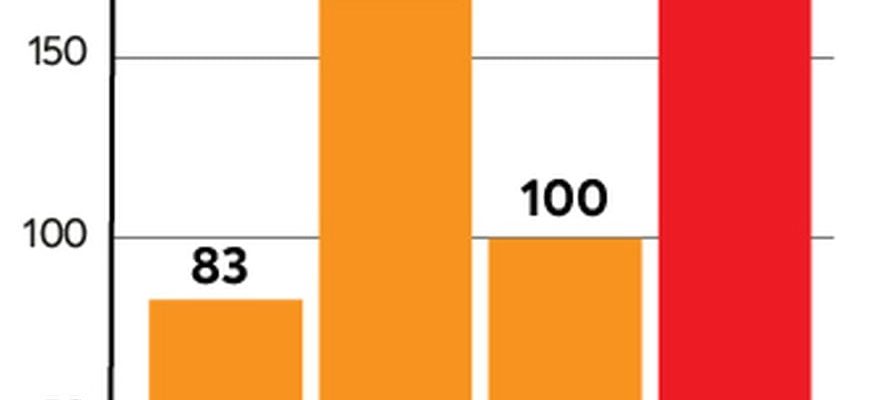Between a region affected by flooding and another affected by historic drought, there are only a thousand kilometers. Paradoxical and striking effect of an ever more disrupted climate, and growing tensions on the country’s water resources. Each summer now imposes its debate on its uses and access, while the sometimes torrential rains of winter ravage certain territories. How can France adapt to this new reality? L’Express wanted to contribute to a debate that is more necessary than ever. These six “black scenarios” for water by 2030 are the translation. They are neither forecasts nor predictions. But hypotheses on which public and industrial authorities are already working more or less directly, and whose frameworks have been refined and enriched by the forty experts interviewed: researchers, meteorologists, senior civil servants, engineers, insurers… All are unanimous: the The country’s resilience in the face of these events is being built now.
EPISODE 1 – March 2026, the 100-year flood of the Seine devastates Paris: our dark water scenarios
EPISODE 2 – August 2027, a mega-fire in Hérault: the worrying hypothesis of an “overrun”
EPISODE 3 – January 2026: a dangerous weather cocktail savagely hits the north of France
EPISODE 4 – August 2029: several scorching summers fuel tensions on the Rhône
This December 16, 2025, the people of Reunion did not sleep a wink: Cyclone Ronald hit the north of the island around 11 p.m. Confined to their homes or housed in emergency centers on orders from the prefecture, the population protected themselves from gusts exceeding 280 kilometers per hour and heavy rain. “With global warming and that of the Indian Ocean, there could be a shift in the trajectory of cyclones towards Reunion. Their power could intensify, observes Jérôme Filippini, the prefect of Reunion. We must prepare for the occurrence of a cyclone resembling the category 5 hurricane, Irma, which hit the Antilles in September 2017.”
Areas are deprived of water, electricity and access to the fixed and mobile network. Radio remains the only information tool. Given the extent of the damage, the people of Reunion are awaiting air assistance, particularly from mainland France. The impatience is all the greater since, five days earlier, the territory was hit by tropical storm Marie, less intense but much more unpredictable. “The dark scenario would be the combination of a very intense tropical cyclone succeeding, a few days apart, a depression wave – that is to say a tropical storm, confirms Davide Faranda, research director at the CNRS in climatology A cyclone has the disadvantage of being a “multi-hazard” event: the affected territory is subject to gusts of wind, rain, hail, lightning.
© / The Express
“Imminent danger”
After several hours on purple alert, synonymous with “imminent danger”, Reunion returns to red alert, both to assess the damage from the cyclone and to allow emergency services to intervene. Seven missing and dozens injured have been counted. Floods, mudslides and landslides affected homes. “Our health system is used to intense events. It can cope,” believes Jérôme Filippini. But the rescue task is difficult, as the first repairs following storm Marie have not been able to begin. “If two events follow one another, the risk would also be a long closure of the airports,” notes Gwenaëlle Pennober, professor at the University of Reunion, geographer and coastal scientist.
Roland-Garros international airport, to the north, was partly destroyed. That of Saint-Pierre-Pierrefonds, regional, in the south, was put back into working order thirty-six hours after Ronald’s visit. “Our vulnerability is primarily linked to airports,” remarks Gwenaëlle Pennober. From the point of view of civil security, the island would thus have autonomy for three days without being connected to France. The Reunionese, accustomed to stocking up in advance, did not lack food. The resumption of activity, on the other hand, is slow in many parts of the island, made inaccessible by landslides and floods. “Many sites are connected to the territory through rafts and submersible bridges. During periods of heavy rain, some are systematically disconnected, continues the geographer. More than 150 of them are submersible. In principle, however, they are not all affected at the same time: it all depends on the trajectory of the cyclone or storm.
Areas must wait several weeks, even months, before being fully attached to the network. “In the past, people have already waited several months without electricity,” she confirms. As a result, the population takes risks. There were five more deaths over the following days. The price of food is exploding. In total, the amount of the loss is around 200 million euros. “Not to mention the lasting damage to agriculture and tourism. Beaches and hiking trails would be devastated, which would permanently alter tourist attractiveness,” sighs Gwenaëlle Pennober.
.
